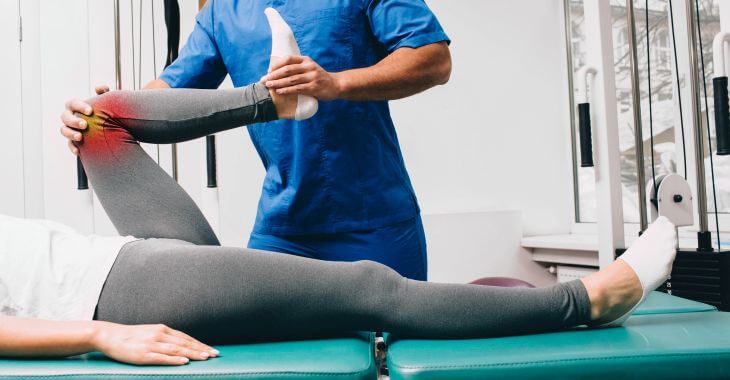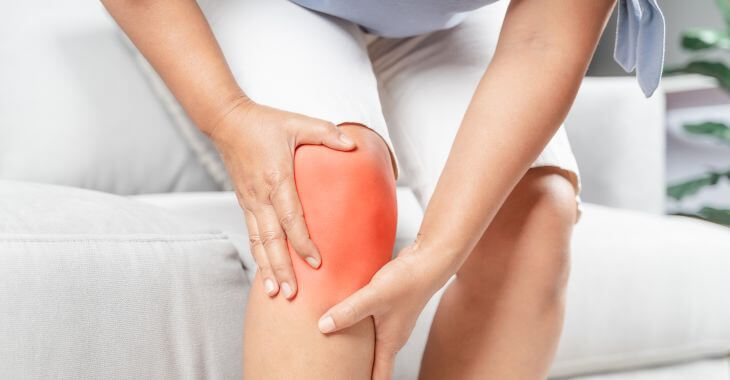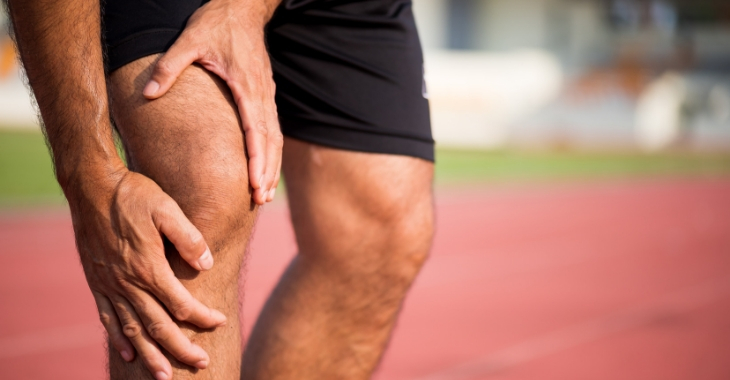Knee Nerve Pain: Causes Symptoms and Treatments

When you think of nerve pain, you may think about pinched nerves in the neck, back or wrist. However, there can also be knee nerve pain when the sciatic or peroneal nerve are irritated or compressed. If you have knee nerve pain, here are the causes, symptoms and treatments for this condition.
Symptoms of Knee Nerve Pain
There is only one nerve that runs through the knee –
the peroneal nerve. It is an extension of the sciatic nerves, which exit the spine in the lower back and travel down each leg. When you have knee nerve irritation, it can cause specific symptoms that affect the outside of the lower leg and top of the foot, including:
- Tingling or “pins and needles”
- Numbness
- Pain
- Burning sensation
- Difficulty lifting big toes
- Difficulty turning the foot outward
The nerve that runs down the leg and through the knee is responsible for supplying the muscles on the outside of the lower leg and top of the foot. If the nerve is permanently damaged, it can result in deterioration of these muscles, jeopardizing strength and mobility in the leg and foot.
Causes of Knee Nerve Pain
Compression or irritation of the sciatic or peroneal nerve are often the cause of knee or lower leg nerve pain. This can occur in the lower back or pelvic area from compression of the sciatic nerve, but it more commonly is caused by a pinched nerve in the knee.
The peroneal nerve extends from the sciatic nerve along the outside of the knee. It is the only main nerve that runs through the knee that can be compressed or pinched in the knee area. This can occur for a variety of reasons that cause pressure on the outside of the knee.
- Crossing Legs
- One of the most common causes of a pinched nerve in the knee is simply crossing your legs. The pressure of the overlapping leg on the outside of the knee can cause temporary pain, tingling or numbness on the outside of the calf and on top of the foot.
- Squatting for Long Periods
- Sitting in a squatted position can put pressure on the outside of the knee and compress the peroneal nerve.
- Ligament Injuries
- There are multiple ligaments that connect the knee joint components. If a ligament is torn or damaged, inflammation can put pressure on the peroneal nerve, causing pain and other symptoms.
- Casts, Braces and Compression Garments
- Anything that compresses near the outside of the knee can cause knee nerve pain and other symptoms. A leg cast or braces can put pressure on the peroneal nerve, as can compression stockings used to minimize edema.
- Knee Fractures
- Broken bones in the knee can cause inflammation or irritation of the peroneal nerve, most commonly the fibula, the outer bone in the lower leg.
- Surgery
- There are multiple surgeries that can result in knee nerve pain and other symptoms. Knee surgeries can damage the nerve in the knee, but knee nerve pain can be caused by abdominal or back surgeries.
- Extended Bed Rest
- Prolonged periods of bed rest, especially lying on your back, can result in knee nerve pain. The legs often rotate outward when lying on your back, which can put pressure on the peroneal nerve.
Treatment for a Pinched Nerve in the Knee
When the symptoms are due to a pinched nerve in the knee, the treatment resolves around relieving the nerve pressure. The exact treatment depends on what is causing the nerve compression. Some of the common treatments recommended for knee nerve pain caused by a pinched nerve include:
- OTC anti-inflammatory medications. Ibuprofen or naproxen are common OTC non-steroid anti-inflammatory drugs (NSAIDs) that can relieve swelling that compresses the nerves.
- Steroid injections. Corticosteroid injections can reduce inflammation near the nerve to relieve pain and other symptoms.
- Ice. Applying ice to the outside of the knee can relieve inflammation and reduce symptoms.
- Avoid aggravating activities. Crossing your legs, wearing knee high boots, squatting, wearing certain garments or lying on your back can all irritate or compress the peroneal nerve. Avoid these activities if it is causing knee nerve pain.
- Surgery. If a broken bone, cyst, tumor or ligament is causing the compression on the peroneal or sciatic nerve, surgery may be required for relief.
- Physical therapy and orthopedic devices. Strengthening the knee, back or leg can help relieve pressure on the nerves in the knee or leg. A physical therapist or orthopedic doctor may also recommend wearing support devices for better mobility.

Knee nerve pain and other symptoms of a pinched nerve in the knee should not be ignored. Prolonged compression can cause permanent nerve damage that can impact your mobility. If you have symptoms of a pinched or compressed nerve in your knee, make an appointment to see your doctor for treatment.
The information provided on this website, including text, graphics, images, and other materials, is intended solely for informational purposes and should not be used as a substitute for professional medical advice, diagnosis, or treatment.




)